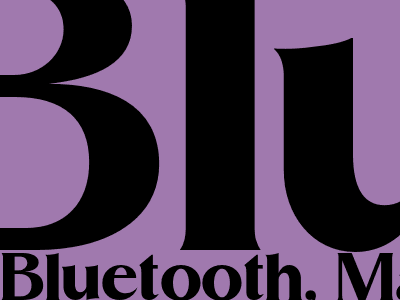
Bluetooth Technology: Past, Present, and Future
Introduction
Bluetooth technology has come a long way since its inception in the late 1990s. Today, it is ubiquitous in our lives, connecting our smartphones, laptops, headphones, and other devices to each other wirelessly. But how did Bluetooth come to be, and what does the future hold for this transformative technology?
The Origins of Bluetooth
Bluetooth was invented by Ericsson, a Swedish telecommunications company, in 1994. The technology was initially developed as a wireless alternative to RS-232 serial cables, which were used to connect devices such as computers, printers, and modems.
The name "Bluetooth" was chosen in honor of Harald Bluetooth, a 10th-century Danish king who united the warring tribes of Scandinavia. Bluetooth technology was designed to similarly unite different devices, connecting them wirelessly and seamlessly.
The Evolution of Bluetooth
Since its inception, Bluetooth technology has undergone several major revisions, each bringing new features and capabilities. These revisions include:
- Bluetooth 1.0 (1999): The first version of Bluetooth, with a range of 10 meters and a data rate of 721 kbps.
- Bluetooth 2.0 (2004): Introduced Enhanced Data Rate (EDR) technology, doubling the data rate to 2.1 Mbps.
- Bluetooth 3.0 (2009): Added support for High Speed (HS) mode, increasing the data rate to 24 Mbps.
- Bluetooth 4.0 (2010): Introduced Low Energy (LE) technology, which reduced power consumption and extended battery life.
- Bluetooth 5.0 (2016): Doubled the range to 20 meters, increased the data rate to 50 Mbps, and introduced new features such as mesh networking.
- Bluetooth 5.1 (2019): Added support for Direction Finding, which allows devices to determine the direction of a Bluetooth signal.
- Bluetooth 5.2 (2020): Introduced Isochronous Channels, which enable the transmission of real-time audio and video data with low latency.
The Future of Bluetooth
Bluetooth technology is still evolving, and the future holds even more exciting developments. Some of the expected advancements include:
- Bluetooth 6.0: Expected to be released in 2024, Bluetooth 6.0 will further increase the data rate, range, and power efficiency.
- Mesh Networking: Bluetooth mesh networks allow multiple devices to connect directly to each other, creating a more robust and resilient network.
- Ultra-Wideband (UWB) Technology: UWB technology can be integrated with Bluetooth to provide precise location tracking and high-speed data transfer.
- Body Area Networks (BANs): Bluetooth-based BANs can connect wearable devices to each other and to the body, enabling new applications in healthcare and fitness.
Market Research on Bluetooth
Bluetooth technology has a significant market presence, with wide adoption across various industries. According to a recent report by Market Research Future, the global Bluetooth market is projected to reach $19.6 billion by 2028, growing at a compound annual growth rate (CAGR) of 9.1%. The growth is attributed to increasing demand for wireless connectivity in smartphones, wearable devices, and other IoT applications.
Key market trends include:
- Growing popularity of wireless earbuds and headphones
- Increased adoption of Bluetooth-enabled smart home devices
- Rising demand for Bluetooth-based location tracking solutions
Conclusion
Bluetooth technology has revolutionized the way we connect devices and has become an integral part of our modern lives. From its humble beginnings as a wireless cable replacement to its current ubiquitous presence in smartphones, headphones, and other IoT devices, Bluetooth has continuously evolved and expanded its capabilities.
As Bluetooth technology continues to advance, we can expect even more innovative applications and groundbreaking developments in the years to come.